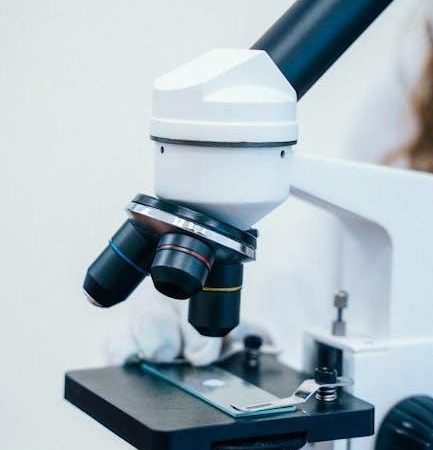A microscope is a crucial tool in science for studying microscopic specimens. Understanding its components is essential for effective use. This guide explores the structural, optical, and mechanical parts of a microscope.
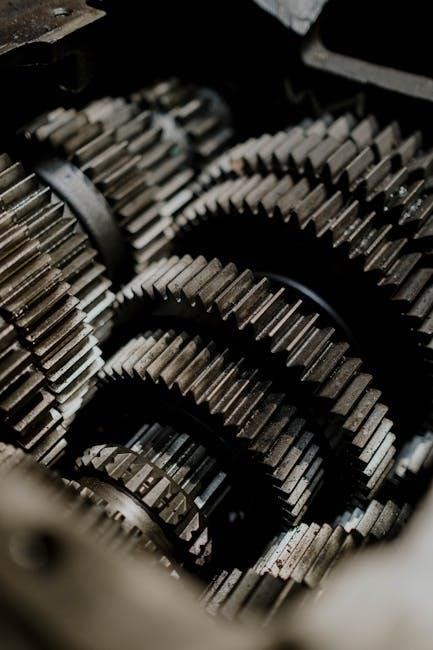
Structural Components
The microscope’s structural components include the head, base, and arm. The head houses the optical system, the base provides stability, and the arm connects the head to the base, ensuring durability and balance.
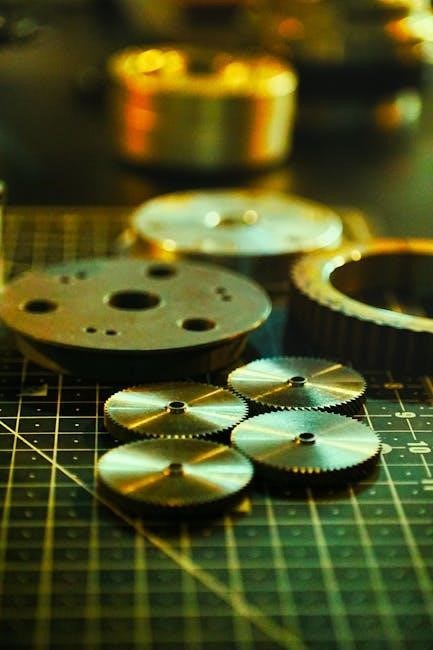
Head
The head of a microscope is a critical structural component that houses the optical system. It is typically located at the top of the microscope and contains essential parts like the eyepiece and objective lenses; The eyepiece, also known as the ocular lens, is positioned at the top of the head and is used for viewing the magnified image of the specimen. It works in conjunction with the objective lenses, which are mounted on a rotating nosepiece below the head. The head also includes a focusing mechanism to adjust the distance between the eyepiece and the objective lenses, ensuring a sharp image. Some microscopes feature a diopter adjustment knob on the head, which allows users to fine-tune the focus for their eyes. The head is designed to be durable and securely holds the optical components in place, ensuring proper alignment and functionality. This part of the microscope is essential for delivering a clear and magnified view of the specimen under examination.
Base
The base of a microscope is its foundational component, providing stability and support for the entire instrument. It is typically made of durable materials, such as metal or high-quality plastic, to ensure balance and prevent vibrations. The base is designed to withstand regular use and is often weighted to enhance stability, especially during focusing or when handling heavy specimens. Some microscopes feature a built-in light source within the base, which illuminates the specimen on the stage. Additionally, the base may house the power switch for the light source, allowing users to easily control the illumination. The base also connects to the arm, which supports the microscope’s optical and mechanical components. Its sturdy construction ensures that the microscope remains stationary during use, which is crucial for clear and accurate observations. The base is an essential part of the microscope, serving as the platform upon which all other components rely to function effectively.
Arm

The arm of a microscope serves as the structural link between the base and the head, providing essential support and stability to the instrument. It is typically constructed from durable materials, such as metal, to ensure longevity and robustness. The arm is designed to connect the base, which houses the light source and provides overall stability, to the head, which contains the optical components like the eyepiece and objective lenses. This connection allows for smooth and precise movement of the microscope’s upper components. The arm also plays a critical role in maintaining the alignment of the microscope’s optical system, ensuring that light travels correctly from the specimen through the lenses to the viewer’s eyes. Additionally, the arm often features a carrying handle, making it easier to transport the microscope safely. Its sturdy design prevents wobbling or bending, which could disrupt the microscope’s performance. Overall, the arm is a vital component that contributes to the microscope’s functionality and ease of use.
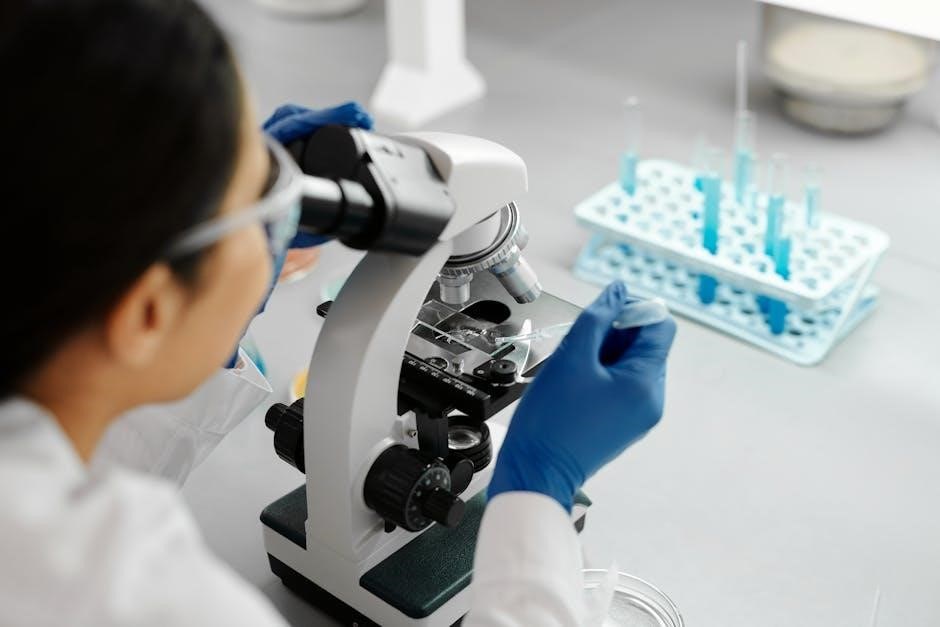
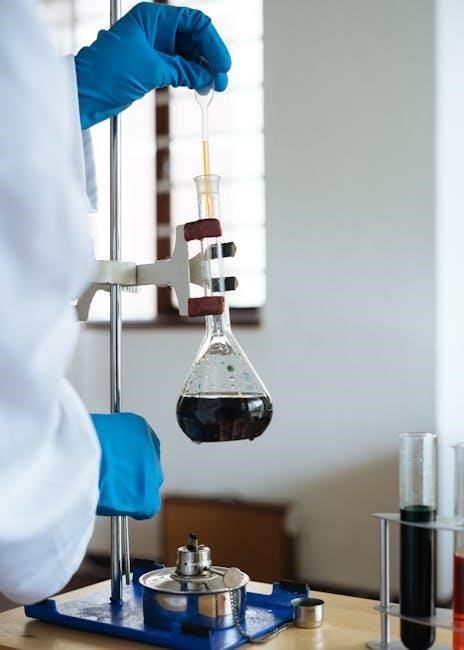
Optical Components
The optical components of a microscope include the eyepiece, objective lenses, and nosepiece. These parts work together to magnify and focus light, enabling clear visualization of specimens. They are crucial for image formation and clarity.
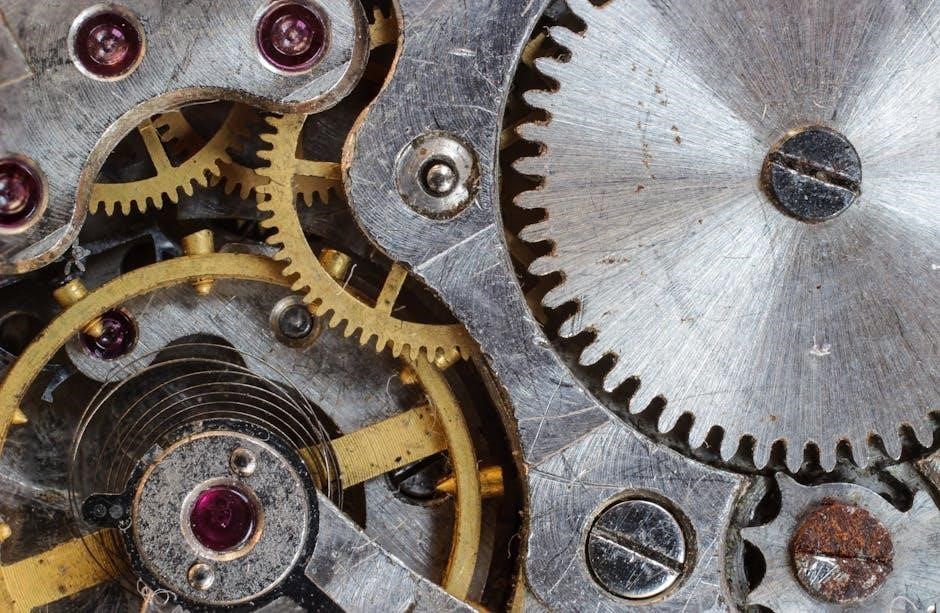
Eyepiece
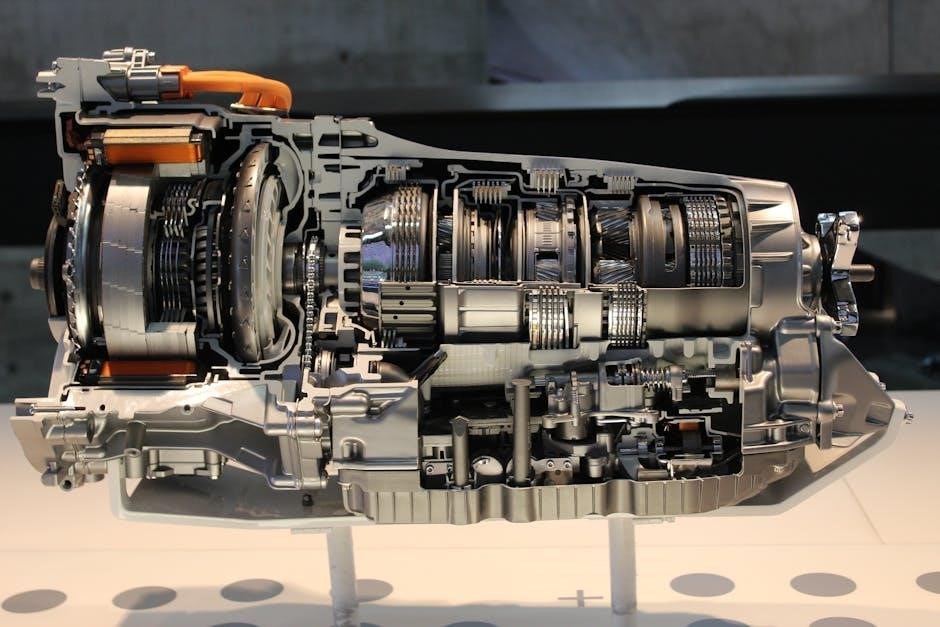
The eyepiece, also known as the ocular lens, is located at the top of the microscope. It is the lens through which the user views the magnified image of the specimen. Typically, the eyepiece has a magnification power of 10X, which works in conjunction with the objective lenses to provide a total magnification of up to 1000X. In binocular microscopes, there are two eyepieces, one for each eye, allowing for a more comfortable and immersive viewing experience. The eyepiece is crucial because it further magnifies the image produced by the objective lens, enhancing the level of detail visible under the microscope. Proper alignment and focus of the eyepiece ensure that the image is clear and free from distortion, making it an essential component for accurate observations in scientific and educational settings.
Objective Lenses
Objective lenses are a critical component of the microscope, located near the specimen stage. They are available in various magnifications, such as 4X, 10X, 40X, and 100X, with higher magnification lenses providing greater detail. These lenses are mounted on a rotating nosepiece, allowing users to switch between different magnifications easily. The primary function of the objective lens is to collect light from the specimen and form an intermediate image that the eyepiece further magnifies. Objective lenses are responsible for the initial magnification and resolution of the image, making them essential for clear observation. Each objective lens is designed for specific specimen types and lighting conditions, with some featuring specialized coatings for improved image clarity. Proper care and cleaning of objective lenses are vital to maintain their optical performance and ensure accurate microscopy results. Understanding the role and proper use of objective lenses is fundamental for achieving precise and detailed observations under the microscope.
Nosepiece
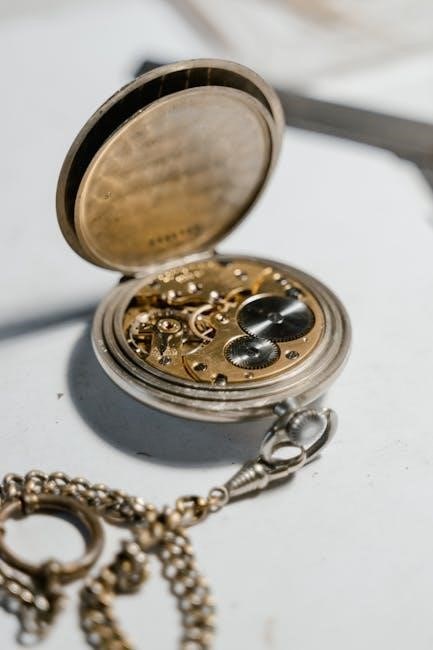
The nosepiece is a circular platform located below the objective lenses and is a key mechanical component of the microscope. It holds multiple objective lenses, typically ranging from 3 to 4, each with different magnifications. The nosepiece allows for easy rotation, enabling users to switch between objectives without removing them. This feature enhances efficiency and convenience during observation. The nosepiece is securely attached to the arm or head of the microscope, ensuring stability. When rotated, it clicks into place, aligning the selected objective lens with the eyepiece for proper focus. This mechanism prevents vibration and ensures the image remains clear. The nosepiece is designed to accommodate various types of objective lenses, making it adaptable for different observation requirements. Proper alignment and maintenance of the nosepiece are crucial for achieving precise and accurate microscopy results. Its role in facilitating smooth transitions between magnifications makes it an essential part of the microscope’s functionality.
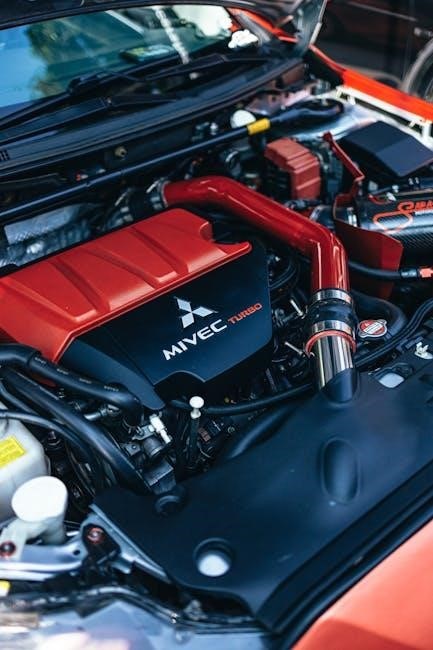
Mechanical Components
The mechanical components of a microscope provide structural support and enable precise specimen observation. These include the stage, stage clips, and focus knobs, which together hold and adjust the position of the specimen slide for accurate viewing.
Stage
The stage is a flat platform located at the base of the microscope, designed to hold the specimen slide securely in place. It is a critical mechanical component that ensures the specimen remains stable during observation. The stage typically features a circular or rectangular opening to allow light from the illuminator to pass through. Some microscopes are equipped with a mechanical stage, which includes knobs that enable precise movement of the slide in both the x and y directions. This feature allows users to position the specimen accurately under the objective lens for detailed examination. The stage is constructed from durable materials, such as metal or high-quality plastic, to maintain stability and prevent vibrations that could disrupt the viewing process. Additionally, the stage often includes graduated scales to help users record the exact position of the specimen, facilitating easy relocation during repeated observations. Proper use of the stage is essential for achieving clear and focused images under the microscope.
Stage Clips
Stage clips are small metal or plastic clamps located on the edges of the microscope stage. Their primary function is to securely hold the specimen slide in place, ensuring it remains stable during observation. These clips are adjustable, allowing them to accommodate slides of varying thickness. By gently pressing down on the clips, users can tightly fasten the slide, preventing any movement that could cause the specimen to shift out of focus. The clips are designed to apply even pressure to avoid damaging the slide or the specimen. This feature is particularly important when working with delicate samples or when adjusting the focus knobs, as it ensures the integrity of the specimen and maintains the accuracy of the observation. Properly securing the slide with stage clips is a fundamental step in preparing for microscopy, as it directly impacts the quality and reliability of the images produced by the microscope. Effective use of stage clips is essential for achieving precise and consistent results in both educational and professional settings.
Focus Knobs
Focus knobs are essential mechanical components of a microscope, enabling precise adjustment of the focus to achieve clear and sharp images of specimens. Typically, there are two types of focus knobs: coarse and fine adjustment knobs. The coarse adjustment knob is used to bring the specimen into approximate focus by moving the stage or objective lens over a larger range. This is particularly useful when initially locating the specimen under low magnification. Once the specimen is in the field of view, the fine adjustment knob is used to make minute adjustments, refining the focus for optimal clarity. Both knobs are designed to operate smoothly, allowing users to avoid damaging the microscope or the specimen. Proper use of the focus knobs ensures that the specimen remains centered and in sharp focus, which is critical for accurate observations. These knobs are indispensable for both routine and advanced microscopy, providing the precision needed to explore microscopic details effectively. Their functionality is fundamental to the overall performance of the microscope.
